Patent Medicines, Nostrums and Snake Oil
Breathing Balloon
"will develop your form, if that's what you want".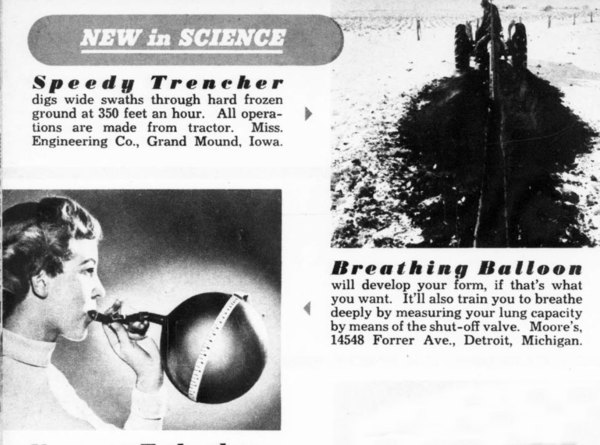
Mechanix Illustrated - Sep 1949
Posted By: Alex - Sat Aug 05, 2023 -
Comments (0)
Category: Beauty, Ugliness and Other Aesthetic Issues, Inventions, Patent Medicines, Nostrums and Snake Oil, 1940s
Ann Wigmore’s Recipes for Longer Life
Ann Wigmore believed that the secret to good health and a long life was eating 1) a lot of wheatgrass and 2) only raw food. If those appeal to you, you'll find lots of recipes in her cookbook below, Recipes for Longer Life (published in 1978, available at archive.org).Wikipedia says that she lived to be 84, which is a relatively long life, but not remarkable. She died of smoke inhalation from a fire. So maybe she would have lived much longer if not for that bad luck?
Wikipedia also says, "many of her claims were denounced as quackery, and her qualifications were never confirmed to be genuine."
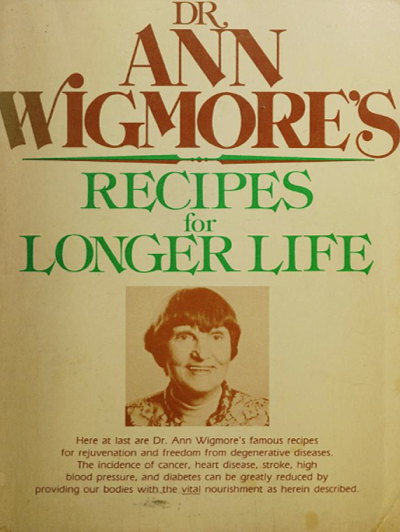

I guess she wasn't keen on melons: "eat them alone or leave them alone".

Posted By: Alex - Fri Jun 16, 2023 -
Comments (3)
Category: Food, Cookbooks, Patent Medicines, Nostrums and Snake Oil, Dieting and Weight Loss
Bust Cream or Food
If it doesn't enlarge your bust, you can serve it for dinner.Source: 1897 Sear Roebuck Catalogue
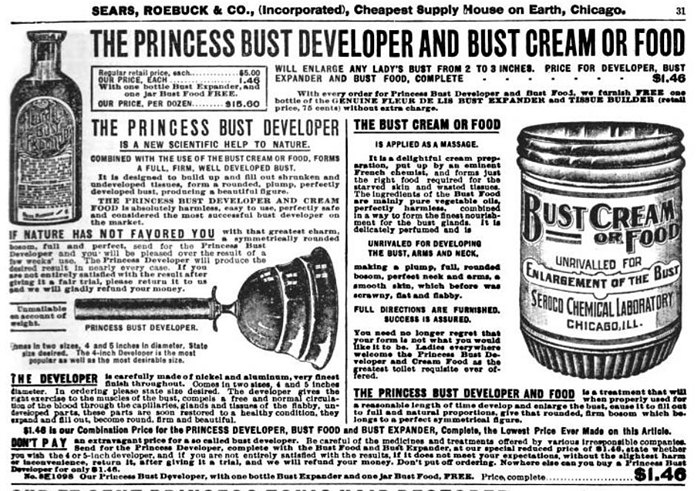
Posted By: Alex - Fri May 26, 2023 -
Comments (4)
Category: Body Modifications, Advertising, Patent Medicines, Nostrums and Snake Oil, Nineteenth Century
Zoom!
Before it was videotelephone software, Zoom was a bustline enhancer.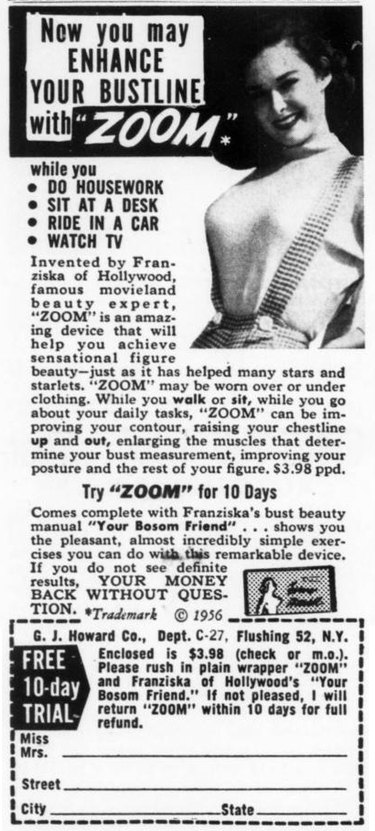
Cosmopolitan - Feb 1957
Posted By: Alex - Wed Apr 05, 2023 -
Comments (2)
Category: Body Modifications, Patent Medicines, Nostrums and Snake Oil, 1950s
Fat Distributor
"Mary Ellen Sage is using a gadget called a fat distributor."The image appeared in the Oklahoma City Times (June 5, 1972), accompanying an article titled "Medical Gimmicks, Magic Potions Trap the Unwary." Unfortunately the article didn't elaborate on how exactly the fat distributor was supposed to work, beyond what the caption said. But I suppose it's self-evident. You rolled it over your body, and it distributed the fat!
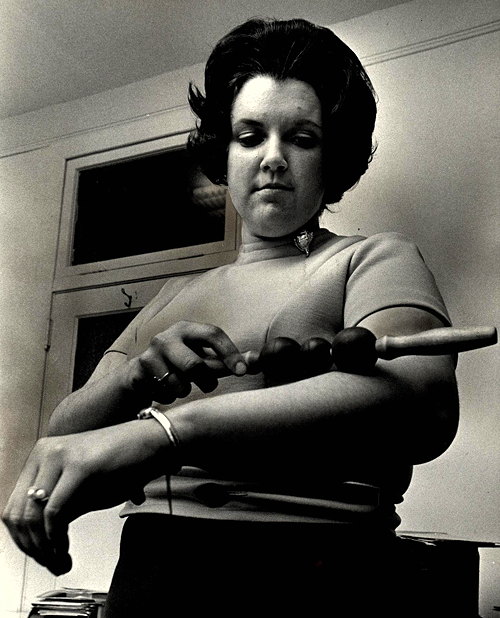
Source: Oklahoma Historical Society
Posted By: Alex - Fri Oct 28, 2022 -
Comments (3)
Category: Patent Medicines, Nostrums and Snake Oil, 1970s, Dieting and Weight Loss
The Cures of Albert Abrams
As his Wikipedia page tells us:Albert Abrams (December 8, 1863 – January 13, 1924) was a controversial American physician, well known during his life for inventing machines, such as the "Oscilloclast" and the "Radioclast", which he falsely claimed could diagnose and cure almost any disease.[1] These claims were challenged from the outset. Towards the end of his life, and again shortly after his death, many of his machines and conclusions were demonstrated to be intentionally deceptive or false.[2]
He actually published a whole periodical devoted to his theories. Read an issue here.
Hugo Gernsback, the father of modern science fiction, was having none of this, running the expose below in a 1923 issue of his magazine SCIENCE AND INVENTION.
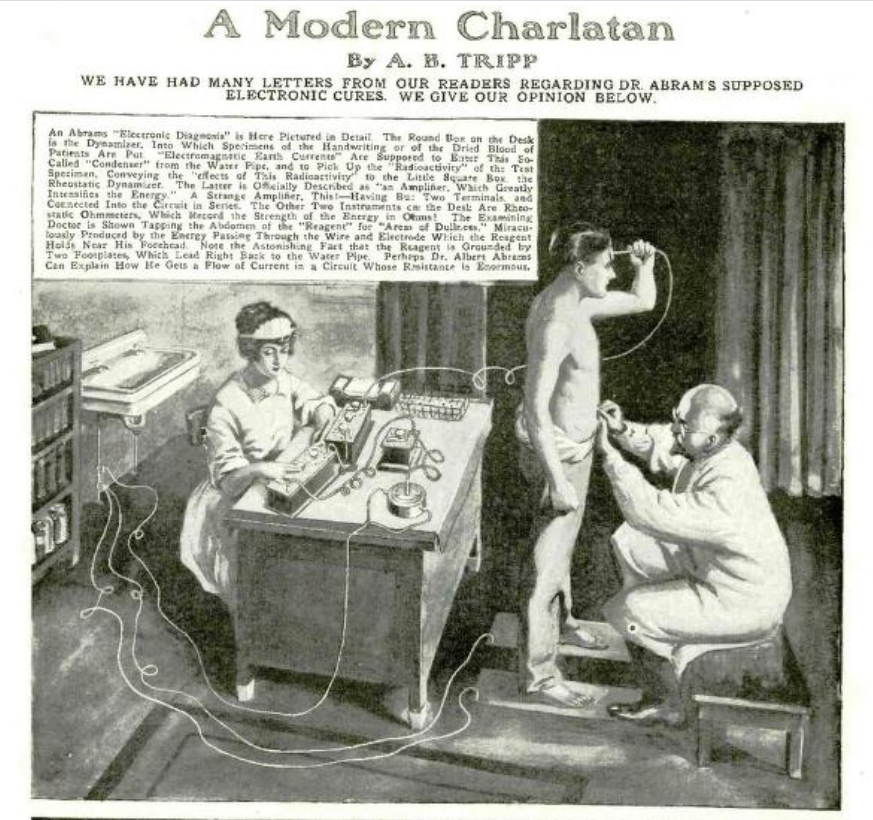
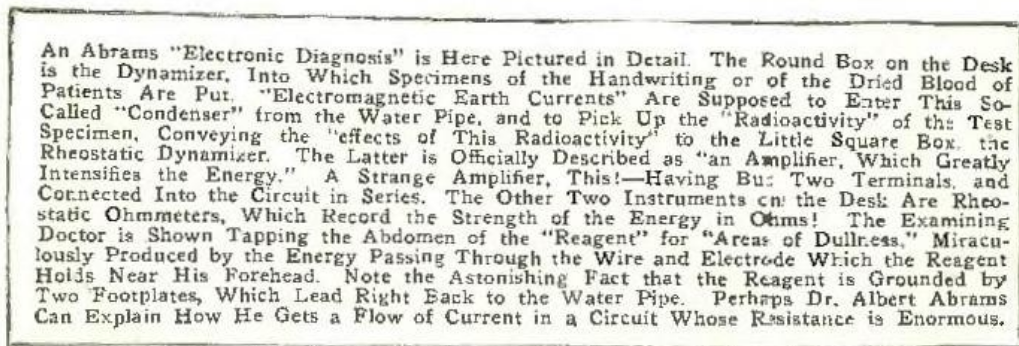
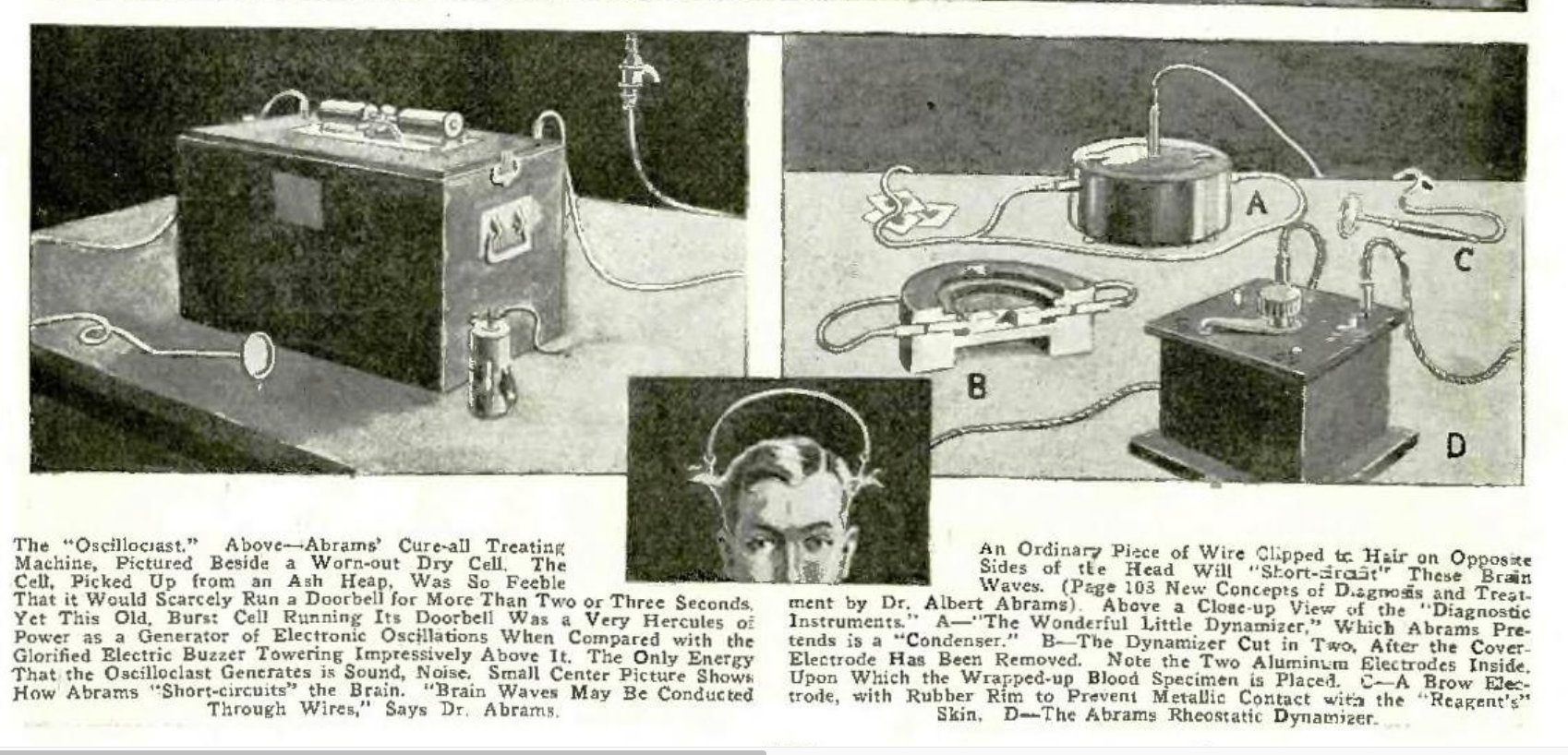
Posted By: Paul - Fri Oct 14, 2022 -
Comments (3)
Category: Frauds, Cons and Scams, Hoaxes and Imposters and Imitators, Medicine, Patent Medicines, Nostrums and Snake Oil, 1920s
Magical Healing Powers of Blue Light
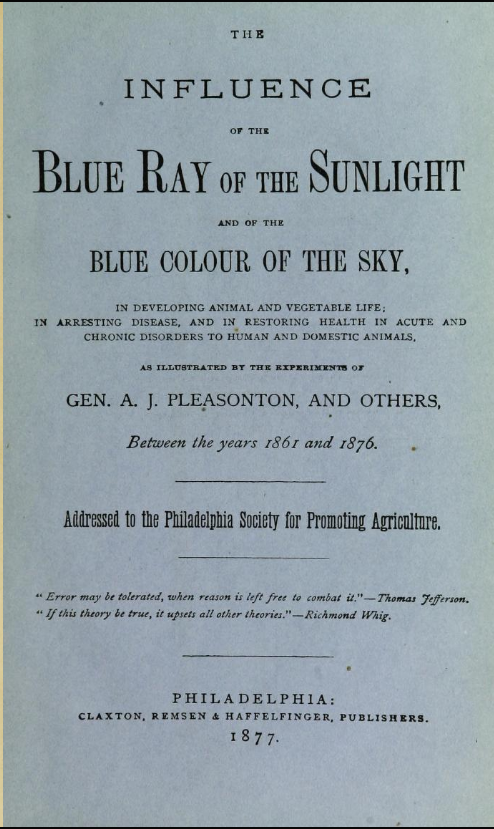
Read the whole thing here.
Posted By: Paul - Fri Aug 26, 2022 -
Comments (0)
Category: Patent Medicines, Nostrums and Snake Oil, Books, Nineteenth Century
Bernard Bernard’s Height Increaser For Short People
"The patient lifted himself by the chin which was cradled in a sling attached to ropes looped to an overhead beam."In 1937, the American Medical Association warned the public that this device, despite being widely advertised, didn't actually work.
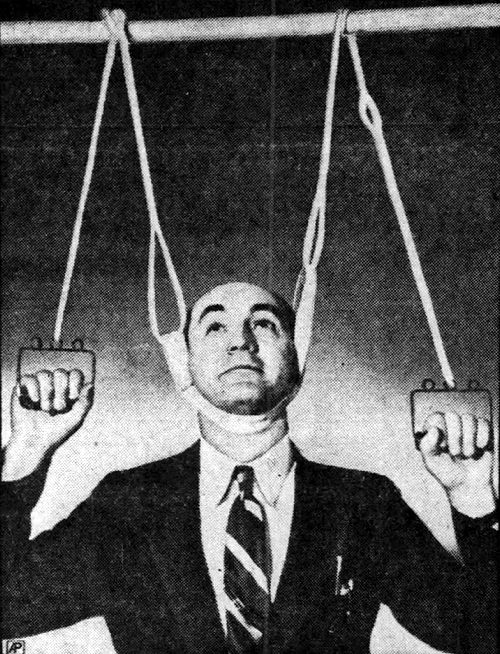
The Muncie Star Press - Apr 9, 1937
Update: The inventor of this device was a man named Bernard Bernard who was, himself, only 5 feet 1 inch tall. Details from Hygeia (May 1936):
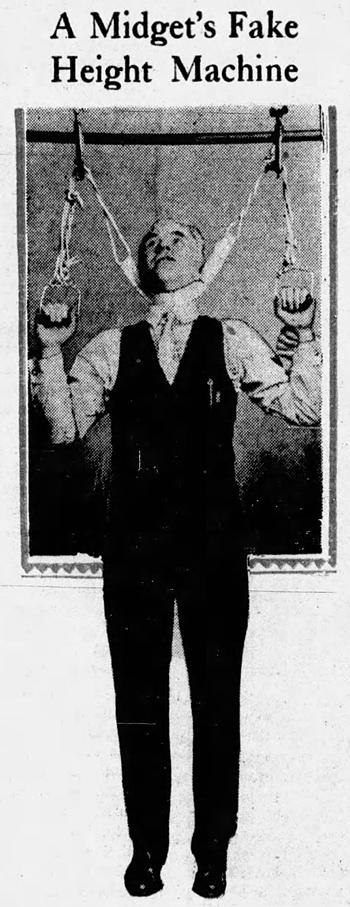
LA Times - July 31, 1932
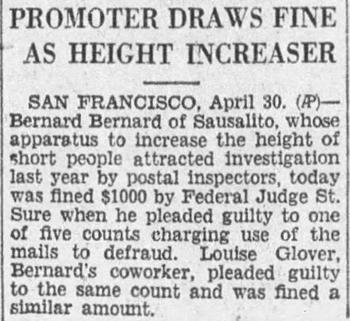
LA Times - May 1, 1930
Posted By: Alex - Sat Jul 02, 2022 -
Comments (8)
Category: Inventions, Patent Medicines, Nostrums and Snake Oil, 1930s
Nose Writing
William Horatio Bates was a New York ophthalmologist who claimed that poor vision could be cured through eye exercises. He was quite well known in the 1920s and 30s.One of his eye exercises was called "nose writing." Here it's described by Margaret Darst Corbett (an "authorized instructor" of his method) in her 1953 book How to Improve Your Sight:
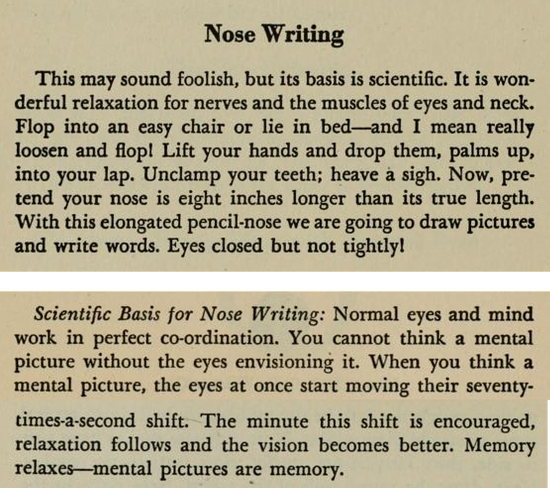
Aldous Huxley was also a fan of the 'Bates Method' and of nose writing, which he described in his 1942 book The Art of Seeing:
I don't think mainstream ophthalmologists have ever put any stock in the benefits of nose writing, but it still has promoters. See the video below.
Posted By: Alex - Fri Jun 24, 2022 -
Comments (1)
Category: Patent Medicines, Nostrums and Snake Oil, Eyes and Vision
The ear as an inverted fetus
From Hugh Aldersey-Williams, Anatomies: the human body, its parts and the stories they tell (2014), p. 158: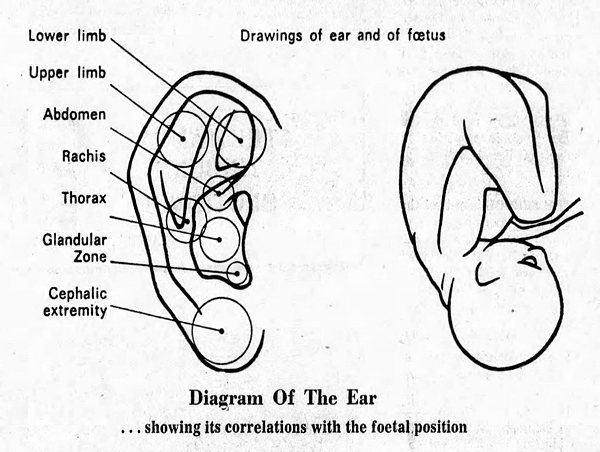
Tampa Tribune - Aug 13, 1973
More info: wikipedia
Posted By: Alex - Wed Jun 15, 2022 -
Comments (2)
Category: Body, Patent Medicines, Nostrums and Snake Oil

| Who We Are |
|---|
| Alex Boese Alex is the creator and curator of the Museum of Hoaxes. He's also the author of various weird, non-fiction, science-themed books such as Elephants on Acid and Psychedelic Apes. Paul Di Filippo Paul has been paid to put weird ideas into fictional form for over thirty years, in his career as a noted science fiction writer. He has recently begun blogging on many curious topics with three fellow writers at The Inferior 4+1. Contact Us |




